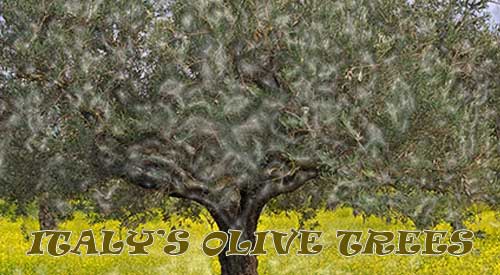Wed 10 Apr 2019
OLIVE TREE DISEASE- THE USA IS NOT ALONE
Posted by DrSmokeRead other related stories: Cooking With Wood , Wood Questions , Wood Science
No Comments

Italy’s Olive Tree Disease
ITALY’S OLIVE TREES FALL TO BACTERIUM Share on X

listen to our blog regarding wood for smoking
I am a wood geek. I love the living cells of trees and the hundreds of compounds that produce the various aromatics, tannins and flavors that make trees so valuable for medicinal, cosmetic, and flavoring uses. Whenever I’m in the woods, I always feel like these giants are breathing with me.
Then my joyful thoughts turn sad. Observing over the years how our lifestyle and explorative ways have changed our atmosphere which in turn changes the natural order of things. One of those things is our trees and the current impact of olive tree disease.
But North America is not alone! Battles over the loss of various hardwoods and softwoods continue as we fight to save the forest giants as well as orchard soldiers around the globe.
Prepare for Higher Olive Oil Pricing due to Olive Tree Disease
It’s called Xylella fastidiosa or commonly called “olive tree disease” and it’s a deadly bacterium that is gaining attention as it takes mark on the olive trees and groves of Italy since 2013. In 2016, this bacterium was blamed for the death of some one million olive trees in Southern Italy most of which were cut down to stop the deadly bacterium from spreading. But it hasn’t stopped. Even with netting and routine pruning, olive trees continue to suffer and eventually die or are cut down.
We know that the bacterium that causes olive tree disease starts somewhere within the heart of the tree and then travels towards the roots and branches. This is the reason pruning can sometimes be beneficial. Research has also shown that there are specific varieties of olive trees that are more susceptible to Xylella resulting in growers moving toward varieties with less risk when they replace or add new growth areas.
There is a pest, the meadow spittlebug, that is the carrier of Xylella and the reason it is necessary to net the trees to prevent this pest from traveling and spreading this major bacterium concern to other areas and other countries.
Much like our North American Emerald Ash Borer pest that is responsible for tens of millions of ash tree death and destruction, the meadow spittlebug and the Xylella bacterium it can carry results in loss of olive production to those damaged branches. Although the olive oil pressed from the olives research shows does not carry any disease or risk from this specter of olive tree disease, the bacterium has significantly reduced the volume of olives available to produce oil. Thus, pricing goes up as availability of olives depletes.
Olive Tree Disease- It’s Not Just an Olive Concern
You might think this is just an olive tree issue but you’d be deadly wrong. Xylella is a strain of bacterium that is considered one of the most dangerous plant bacteria in the world. It causes a tree to die of thirst from the inside out by blocking the xylem or transport tissue of the tree responsible for moving water and nutrients from the roots upwards to other parts of the tree. Xylella is then carried from tree to tree by the spittlebug who latch on to the tree’s xylem tubes sucking out liquid. When they travel to the next tree to feed, the bacterium they’ve picked up is passed into that tree’s xylem when they go to feed again. With no cure, the plant or tree stays infected for life, until it dies.
There have been strains of Xylella fastidiosa in citrus as well as pear, peach and plum. There is also a potential new strain in Southern California that could affect the grape production which could decimate the wine production something not needed after all the years of wildfires.
Continents currently affected by this bacterium include North America, Europe, and Asia but more are expected.
Olive Tree Disease- What’s Next?
In my opinion, the focused concern is on the specific market of product whether it be olive oil, wine, or fruits and not on the tree destruction that is occurring all around us. I’m wondering how much longer we have to witness century old trees dying and family businesses evaporating from what appears to be nature taking back or returning to the soil what she feels is rightly hers. I can’t help but think that these pests that are invading our largest plants on our planet are likely the result of our own actions or even inaction.
How concerned are you about the North American trees? Leave us a comment and subscribe to get our latest tips, techniques, and recipes, plus, the science behind the fire and smoke.
SmokinLicious® products:
Wood Chunks- Double & Single Filet
Wood Chips- Grande Sapore®, Minuto® & Piccolo®
Charwood

More related reading:
-I’LL TAKE MINE WITH AN OLIVE!
-TO BARK OR NOT
-IS THE FOOD INDUSTRY CULPABLE FOR THE SPREAD OF OAK TREE MORTALITY?
